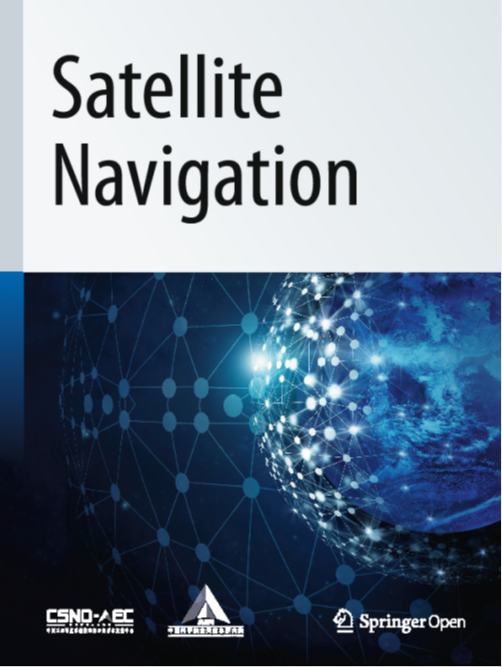多整数候选数歧义解析:统一歧义解析算法
IF 10.1
1区 地球科学
Q1 ENGINEERING, AEROSPACE
引用次数: 0
摘要
在所有模糊解决技术中,完全模糊解决(FAR)、部分模糊解决(PAR)和最佳整数等差(BIE)估计器得到了广泛应用。虽然对不同类别的模糊性解决方法都进行了研究,但我们仍希望找到这些具体算法之间的关系。在这项工作中,我们通过应用多整数候选,将 PAR 算法和 FAR 算法统一在 BIE 的整体框架下。首先,我们根据浮解的方差和候选数的概率分布,推导出了高斯 BIE 估计器方差的简明估计公式。然后,我们提出了一种名为 "多整数候选模糊度解析(MICAR)"的算法,以尽可能多地发现 BIE 中的模糊点,并用 PAR(FAR)算法代替 BIE 进行更精确的估计。在实验中,我们利用 GPS(全球定位系统)+ BDS(北斗卫星导航系统)+ Galileo(伽利略卫星导航系统)的模拟数据来对比 MICAR 和单一候选估计器(即 FAR)的效果。以置信度为 95% 的 5 厘米阈值为例,MICAR 使收敛过程加快了约 3.0 分钟。当定位序列收敛时,MICAR 在水平方向上将定位误差的均方根降低了 9.8%,在垂直方向上将定位误差的均方根降低了 3.5%,这归功于更固定的 NL。本文章由计算机程序翻译,如有差异,请以英文原文为准。
Multiple integer candidates ambiguity resolution: a unification ambiguity resolution algorithm
Among all the ambiguity resolution techniques, the Full Ambiguity Resolution (FAR), Partial Ambiguity Resolution (PAR) and Best Integer Equivariant (BIE) estimator are widely used. Although the researches have been done on the different classes of ambiguity resolution, we still hope to find the relationships among these specific algorithms. In this work, we unify the PAR and FAR algorithms under a whole framework of BIE by applying multiple integer candidates. A concise estimation formula of the variance of Gaussian BIE estimator based on the variance of float solution and the probability distribution of the candidates is first derived. Then, we propose an algorithm named Multiple Integer Candidates Ambiguity Resolution (MICAR) to discover as many ambiguities in the BIE as possible that can be estimated more precisely by PAR (FAR) algorithm instead of BIE. In the experiments, we utilize the simulated data of GPS (Global Positioning System) + BDS (BeiDou Navigation Satellite System) + Galileo (Galileo navigation satellite system) to contrast the effects of MICAR and single candidate estimator, i.e., FAR. By taking the threshold of 5 cm at 95% confidence level as an example, MICAR accelerates the convergence process by about 3.0 min. When the positioning sequence converges, MICAR reduces the root mean square of the positioning error by 9.8% in horizontal directions and 3.5% in vertical direction, which is attributed to more fixed NL.
求助全文
通过发布文献求助,成功后即可免费获取论文全文。
去求助
来源期刊

Satellite Navigation
Multiple-
CiteScore
19.40
自引率
6.20%
发文量
25
审稿时长
12 weeks
期刊介绍:
Satellite Navigation is dedicated to presenting innovative ideas, new findings, and advancements in the theoretical techniques and applications of satellite navigation. The journal actively invites original articles, reviews, and commentaries to contribute to the exploration and dissemination of knowledge in this field.
 求助内容:
求助内容: 应助结果提醒方式:
应助结果提醒方式:


